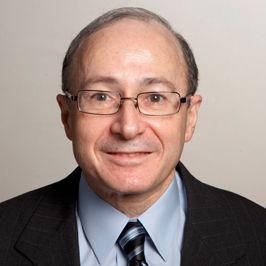Video
PDE4 in Plaque Psoriasis
Author(s):
Leon Kircik, MD, provides an overview of PDE4 inhibitors in the treatment of plaque psoriasis.
Leon Kircik, MD: When we started a long time ago when I was a resident, we only had topical steroids to treat plaque-type psoriasis. Now, we are very lucky, we have so many new options in our armamentarium to treat plaque-type psoriasis. We have almost 11 biosimilars, and more coming. But when it comes to the topical world of treatment, we are still very behind, ironically. We still rely upon topical steroids, however, as you know, it is very difficult to maintain a chronic disease with topical corticosteroids. I think the biggest unmet need nowadays, for us in plaque-type psoriasis treatment, is to have nonsteroidal treatment options where we can use those safely and efficaciously.
The history of PDE4 inhibitors goes back to our first exposure that I remember, which was topical crisaborole, which is actually indicated for atopic dermatitis. Then we ended up with apremilast, which is an oral PDE4 inhibitor. But as we go along, we are learning that there are many different types of PDE4 inhibitors with different binding affinity, and different efficacies. Now we have topical roflumilast, which has been approved for plaque-type psoriasis. This is what I call “not your grandfather’s Chevy,” so it’s not your grandfather’s PDE4 inhibitor. We know from in vitro studies that roflumilast is actually 20 to 300 times more effective and more powerful than existing PDE4 inhibitors that we had in the market. Of course, this is shown in vitro, but we also see in the clinical studies its efficacy is higher. So, it’s a different PDE4 inhibitor and I’m really happy that we are able now to offer a new topical, a nonsteroidal, and a new PDE4 inhibitor to our patients.
Most of our patients will be OK with topical treatment when they have a couple of plaques on their elbows and knees. My limit is around 7% to 8% body surface area. In all honesty, once you pass that 10% body surface area, I think it’s very difficult to use a topical. How much can you smear a cream all over your body? It’s almost impossible physically for our patients. On the other hand, I never separate the oral and topical treatments from each other. I think topical treatment is the mainstream treatment for us in dermatology. We are in the business of topical treatment. We can use both topical and oral treatments together, and we do it all the time.
Transcript edited for clarity





